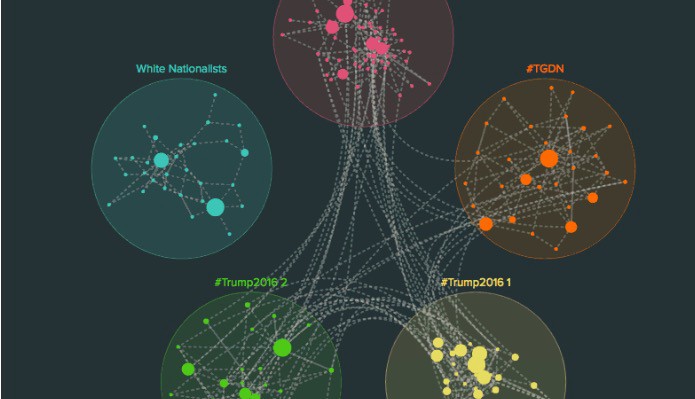
Hello All
The first link is an interesting deep dive into data analysis from a former classmate of mine. Google’s Machine Translation article is an example of a well put together blog post. Insightful and technical, yet in depth enough for most audience members to read. The UXD Team is working though complete examination of FlightBag, starting with a Competitive Analysis. Several UX links are listed that will help you better use, analyze, and build more successful products. Lastly, a nod to Alan Cooper’s seminal book on product and interaction design.
Have a great week.
Mohit
1. #TrumpWon? trend vs. reality
“A deep dive into the underlying data: Why is everyone so obsessed with this hashtag and the fact that it was in Twitter’s trending topics list the morning after the first presidential debate? Perhaps the competitive nature of a presidential debate — the fact that there’s supposed to be a “winner” — means that we’re reading into any available data point. Maybe due to the nature of this specific election cycle, where facts seem to have become subjective, as people in online echo-chambers consume what they want to believe.”
https://medium.com/i-data/trumpwon-trend-vs-reality-16cec3badd60
2. Google Neural Machine Translation system (from Don)
“A Neural Network for Machine Translation, at Production Scale
https://research.googleblog.com/2016/09/a-neural-network-for-machine.html
3. UX Techniques
A comprehensive collection of UX techniques available for use on UX projects.
http://uxmastery.com/resources/techniques/
4. How to Conduct Competitive Research
“Conducting a competitive assessment should be an ongoing process, one in which you continue to deepen your understanding of the strengths and weaknesses of your competitors. Every business should gather information about the competition and most already do — even if they don’t formalize it into a competitive research process. ‘Everyone really needs to do competitive research. The difference is scale,’ Levy says. ‘You really need to keep your eyes open regardless of how large you are or what you are selling.'”
http://www.inc.com/guides/2010/05/conducting-competitive-research.html
5. Chapter 4. Conducting Competitive Research
“You were right. I was on the wrong track.
We’re deep in the valley, how deep in the gulley.
And now in the canyon. Out in the yonder.
—SONIC YOUTH (1984)”
“Now that you have a strong positive signal that you’re onto something, you need to ask, “Why hasn’t this solution been built yet?” I hesitate to say that everything has been done, but pretty much everything has been attempted. It’s because individuals and companies have been designing products for distribution and consumption on the Internet for more than 20 years! Knowing what has actually worked or failed is crucial to identifying a competitive advantage.”
https://www.safaribooksonline.com/library/view/ux-strategy/9781449372972/ch04.html
6. Competitive Usability Evaluations: Learning from Your Competition
“Definition: Competitive usability evaluations are a method to determine how your site performs in relation to your competitors’ sites. The comparison can be holistic, ranking sites by some overall site-usability metrics, or it can be more focused, comparing features, content, or design elements across sites. Evaluations can take the form of expert reviews, where an experienced usability practitioner reviews the designs based on her expertise and knowledge of usability, or competitive usability testing, where users complete a set of tasks using 2 or more competing sites. Rather than simply looking at a competitor’s site to see what they’re doing and what you personally think is interesting or different, doing an evaluation allows the design team to understand what works and what doesn’t from a user’s perspective or an expert’s perspective.”
https://www.nngroup.com/articles/competitive-usability-evaluations/
7. The Inmates Are Running the Asylum: Why High Tech Products Drive Us Crazy and How to Restore the Sanity
“Imagine, at a terrifyingly aggressive rate, everything you regularly use is being equipped with computer technology. Think about your phone, cameras, cars-everything-being automated and programmed by people who in their rush to accept the many benefits of the silicon chip, have abdicated their responsibility to make these products easy to use. The Inmates Are Running the Asylum argues that the business executives who make the decisions to develop these products are not the ones in control of the technology used to create them. Insightful and entertaining, The Inmates Are Running the Asylum uses the author’s experiences in corporate America to illustrate how talented people continuously design bad software-based products and why we need technology to work the way average people think. Somewhere out there is a happy medium that makes these types of products both user and bottom-line friendly; this book discusses why we need to quickly find that medium.”
https://www.amazon.com/Inmates-Are-Running-Asylum-Products/dp/0672326140
